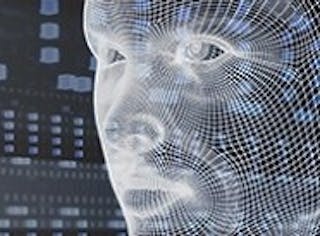Model-based complex product modelling in knowledge-based engineering environment

Researchers
Guolong Zhong, PhD researcher
Supervisors: Dr Pathmeswaran Raju and Prof Craig Chapman
Centre for Advanced Design Engineering, Knowledge Based Engineering (KBE) Lab
Background
The growing need of highly productive industrial processes has forced industry and enterprise to expand their capacity and reduce cost in each part from design to manufacture. Lower manpower cost and less time are always expected in the product development lifecycle. To achieve this goal, efficient product modelling is necessary and important for supporting the design and manufacture of complex products.
KBE is an enabling technology that can be used for capturing, integrating and reusing knowledge. It requires high-level human expertise and contains complicated and iterative processes based on methodologies and technologies. A well-developed KBE system can tremendously reduce the product design time and repeating design process, and also improve the quality of products. Knowledge-based product modelling is becoming one of the most advanced methods with great potential and capacity in future complex product design. Therefore, this research is expected to develop a product modelling system with combination of improved KBE modelling methodology.
Research Aims
The aim of this research is to develop a product modelling system for representing free-form surface to improve the design and reduce time and manpower cost in knowledge-based engineering environment.
Method of research
This research includes five work packages.
1. Literature review and analysis: To identify the background, practice and significance of this area. Then analyse current product modelling and KBE methodologies and put forward to a method for this research.
2. Data collection: To provide the raw data and material that can be utilized in this research.
Firstly, geometry information and knowledge associated in designing a product will be collected. The data and knowledge includes design intents, expertise, manufacturing techniques and constraints, theoretical rules and mathematical algorithm behind the geometry etc.
Then, necessary experiments will be required for measuring a surface of a product with a coordinate measuring machine or a 3D scanner. The data from the measurement will be used as coordinates for fitting free-form surface.
3. Development: To develop a product modelling system.
At first, product modelling and KBE methodologies will be evaluated to choose the most appropriate methods for product modelling in KBE.
Then, a product modelling system will be developed based on knowledge-based product modelling methodology in KBE environment. After that, a method that can translate data between STEP instances and company specialization will be developed. The STEP and its instances have to be translated into another language to communicate with company-specific concepts.
4. Test, validation and evaluation: To examine the developed system, analyse the results and make improvement.
At first, the developed system will be tested by using the collected data to check if the product geometry can be generated. The output of the translation method will be examined by changing the user defined parameters to see if the STEP instances will change along with it. In the next step, operation results and failures will be recorded and analysed. Modification will be made to improve the developed system according to the analysis. In the meantime, refinements methods will be evaluated and applied based on the output accuracy of the product geometry generated in this developed system. After that, simulation will be performed to test the performance of the product of developed system.
5. Writing and archiving: The thesis will be completed by continuous writing from all stages of the research.
Outcomes
- Methodologies of product modelling, knowledge-based engineering were reviewed.
- STEP standard in product modelling were reviewed.
- Initial literature review and research proposal
Applications
This research will be used in complex product modelling to support and improve the product development process chains throughout the product life cycle, resulting in cost reduction and time optimization.
The aim of this research is to develop a product modelling system for representing free-form surface to improve the design and reduce time and manpower cost in knowledge-based engineering environment.